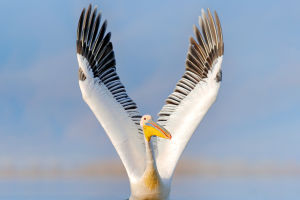When you picture elegance in the animal kingdom, the European fallow deer likely comes to mind.
These creatures, with their sleek bodies and distinctive antlers, move with an effortless grace that has captured human admiration for centuries.
Native to Europe but now thriving in parks and woodlands worldwide, fallow deer symbolize beauty and serenity wherever they roam.
But there’s more to these animals than just their appearance – let’s dive into their fascinating world.
Physical Features: Aesthetic and Adaptable
The European fallow deer (Dama dama) comes in several coat variations, including a light brown shade with white spots in summer, which shifts to a darker, denser coat in winter. Some even have an all-black or pure-white appearance, known as melanistic and leucistic types. Their long, slender legs give them a graceful gait, and they are built to move silently, making them excellent at avoiding predators. But what sets them apart is their antlers – unlike many other deer species, male fallow deer (bucks) have palm-shaped antlers that resemble a wide fan.
These antlers grow larger each year, peaking in size by the time the buck reaches maturity at about 5–6 years old. Bucks shed their antlers annually, only to regrow them in time for the breeding season. This cycle represents nature’s way of balancing beauty with survival.
Behavior: Social and Seasonal Patterns
Fallow deer are highly social animals, often seen in small groups led by a dominant buck. During most of the year, bucks and does (females) live separately, coming together only for the breeding season, known as the rut, which occurs in October. This is when the bucks clash, using their antlers to compete for mates. The sight of these majestic animals locking antlers is a spectacle that symbolizes both rivalry and the continuity of life.
Outside of the rut, fallow deer are relatively peaceful creatures, content to graze on grasses, leaves, and acorns. They are crepuscular, meaning they are most active at dawn and dusk, which helps them avoid predators like wolves or large cats.
Habitat: Thriving Beyond Borders
Though native to Europe and the Mediterranean, fallow deer have been introduced to many parts of the world, including North America, Australia, and South Africa. In many places, they’ve adapted well to life in managed parks, forests, and even farmland. They prefer woodlands with open spaces, where they can feed and rest comfortably. These adaptable animals can tolerate a variety of climates, thriving both in warm coastal areas and cooler mountain forests.
A Symbol of Grace and Balance
Throughout history, the European fallow deer has been associated with elegance and nobility. In many cultures, spotting one in the wild is believed to be a sign of good luck. Their gentle movements and quiet presence embody the balance between strength and beauty – a reminder that grace often comes with resilience.
Fallow deer populations remain stable today, thanks to conservation efforts and careful wildlife management. Many parks and nature reserves ensure these animals have a safe habitat, allowing future generations to experience their magic up close.


